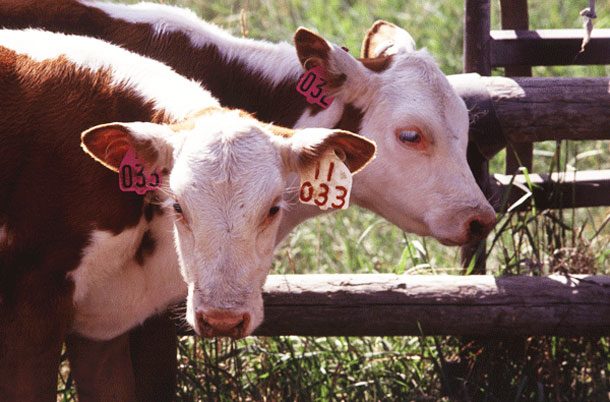September 24, 2013

A post-weaning management option is to keep calves at home and pre-condition them.
Pre-conditioning is usually a 45 day period immediately following weaning. It insures that calves are broke to consume feed from a bunk, water from a trough and that vaccinations are now providing active immunity.
Though it requires more facilities, labor and feed, pre-conditioned calves are in high demand. Numerous research and Extension trials have demonstrated that calf growth is very efficient during this 45 day period and returns are far above costs.
September herd management tips
Spring calving herds (January-March)
General
• Finalize plans for marketing of the calf crop. Coordinate and time weaning, vaccination programs, and weaning-time management in concert with marketing plans. Calculate break-evens on various marketing options and consider risk management strategies.
• Schedule and conduct pregnancy diagnosis with veterinarian 45-60 days following breeding season. Plan a marketing strategy for open cows.
Evaluate feed supply
• Plan for winter by evaluating feed and forage supplies and options, including conducting forage tests to determine nutritional content of hay on hand.
Nutrition and forages
• Body Condition Score cows at weaning and separate thin cows
• Use palatable feeds and high quality hay to background calves.
• Continue stockpiling forages.
• Continue to manage first-calf heifers separately; give them the best forage. Thin mature cows could be added to this group.
• Continue to feed high Se trace mineral salt. A forage analysis can reveal what other minerals should be supplemented.
• Continue to manage growth of warm season grass pastures by rotational grazing. As warm season pastures approach dormancy, continue to use rotational grazing to manage residue.
• Store your high quality hay in the dry.
• Collect and submit forage samples for nutrient analysis.
Herd health
• In consultation with your veterinarian, finalize vaccination and pre-conditioning protocol for calf crop. Administer pre-weaning vaccinations.
Reproduction
• Make plans to pregnancy check heifers as soon as possible after bull removal. This will allow options in marketing open heifers.
• Remove bulls after 60 days for a controlled calving season.
• Schedule pregnancy check of the cow herd with veterinarian
Genetics
• Collect 205-day weights on calf crop at appropriate time (AHIR age range 120-280 days), along with cow weights, hip heights and body condition scores (cow mature size data taken within 45 days of calf weaning measure).
Identify replacement heifers
• Identify replacement heifers. Utilize available tools including genetics, dam performance, individual performance, and phenotype. Restrict replacement heifer pool to those born in defined calving season.
Fall calving herds (September-November)
General
• Secure necessary supplies for calving season (ob equipment, tube feeder, colostrum supplement, ear tags, animal health products, calving book, etc.)
• Move pregnant heifers and early calving cows to calving area about 2 weeks before due date.
• Check cows frequently during calving season. Optimal interval is to check calving females every 4 hours. Address calving problems early.
• Utilize calving area that is clean and well drained. Reduce exposure to scours by moving 2-3 day old pairs out of calving area to separate pasture (reduce commingling of newborn calves with older calves).
• Identify calves promptly at birth. Record birth weight, calving ease score, teat/udder score, and mothering ability of cow.
• Plan for winter by evaluating feed and forage supplies and options, including conducting forage tests to determine nutritional content of hay on hand.
Nutrition and Forages
• Evaluate growth of yearling heifers with goal of reaching 60-65 percent of mature weight by breeding. Depending on forage quality, supplementation may be needed to meet weight gain target.
• Continue to feed high Se trace mineral salt.
• Reserve high quality hay and pasture area for cows post-calving.
• Use grazing management to control the residue of warm season pastures as they approach dormancy. Use strip-grazing as a tool to increase the efficiency of utilization of cool season pastures by cows post-calving.
• Store your high quality hay in the dry.
• Collect and submit forage samples for nutrient analysis.
Herd Health
• Ensure colostrum intake first few hours of life in newborn calves. Supplement if necessary. Newborn calves need 10 percent of body weight in colostrum first 24 hours of life.
• Provide selenium and vitamin A and D injections to newborn calves.
• Castrate commercial calves at birth.
• Monitor calves closely for scours and pneumonia, have treatment supplies on hand.
Genetics
• Collect yearling performance data (weight, height, scrotal, ultrasound) in seedstock herds.
• Evaluate bull battery and begin planning for the breeding season by evaluating herd goals and objectives.
You May Also Like




